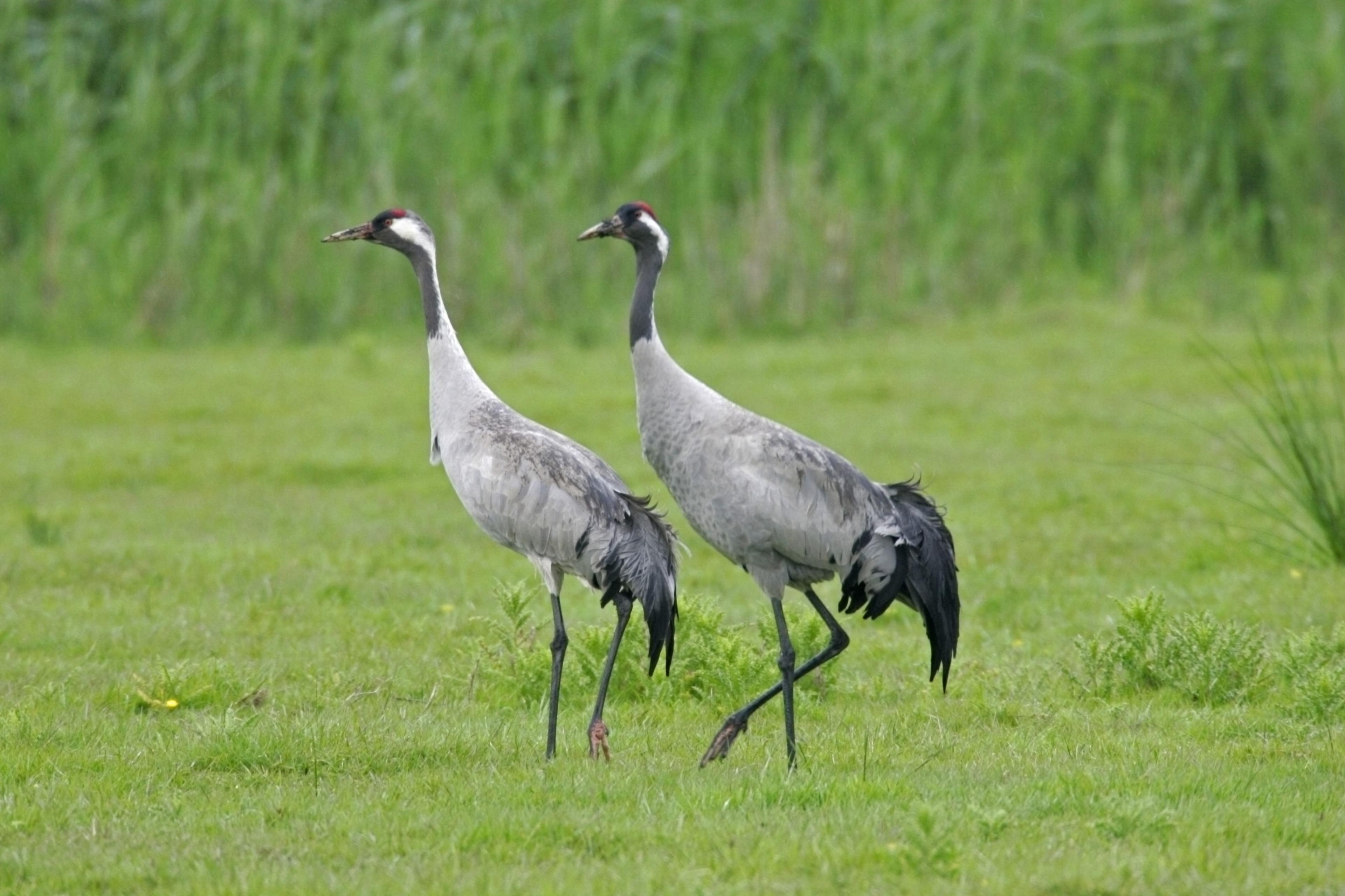Great Crane Project: Wetland bird numbers continue to rise in the UK
- Published
- comments

Cranes went extinct in the UK 400 years ago, but have continued their recent comeback with a new high of 64 pairs recorded in a survey in 2020
Conservationists want better protection for the UK crane population after a recorded increase in the number of birds in 2020.
Cranes became extinct in the UK 400 years ago as a result of hunting and the loss of their wetland habitat.
But the combination of a natural return of a few birds to Norfolk in 1979 coupled with conservation work, has helped the species stage a comeback, wildlife experts said.
The latest survey shows a record 64 pairs across the UK last year, which produced 23 chicks.
If we want to see this amazing achievement repeated across the UK, governments must take action to designate the most important sites for this iconic species as part of the UK's protected area network.
The common crane is around 1.2m high and is known for its famous dancing displays which it does to attract a mate.
They disappeared all the way back in the 1600's - back when Queen Elizabeth I and James I reigned - after being hunted to extinction in Britain.
Conservationists believe if you add up all the birds, including the ones not in breeding pairs, there are more than 200 birds now here in the UK.
10-day-old common crane chick - this little guy was snapped paddling in a pond in Germany. Let's hope we'll see more here too!
The Great Crane Project has been critical in the success of the wetland bird's comeback, and they say the last five years are understood to be the most productive for the species.
At least 85% of the breeding population are found on protected nature reserves, the survey shows.
The project is in partnership with the RSPB, Wildfowl and Wetlands Trust and the Pensthorpe Conservation Trust, which has been responsible for creating and improving existing habitat, as well as hand-rearing young birds for release on the Somerset Levels and Moors.
A common crane takes flight
Damon Bridge, chairman of the UK Crane Working Group said: "The return of cranes to the British landscape shows just how resilient nature can be when given the chance.
"If we want to see this success continue then these sites that cranes use and need must get adequate protection."
The wetland habitats where cranes make their home support a wide range of other wildlife, as well as providing protection from floods and storms and storing carbon.
Conservationists hope that the government will now take notice of the growing success of the birds and protect more of the areas that they call home.
- Published4 January 2021
- Published2 February 2021
- Published1 February 2021
